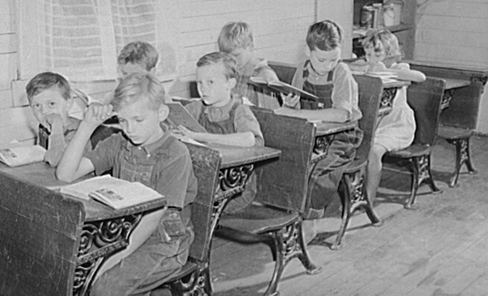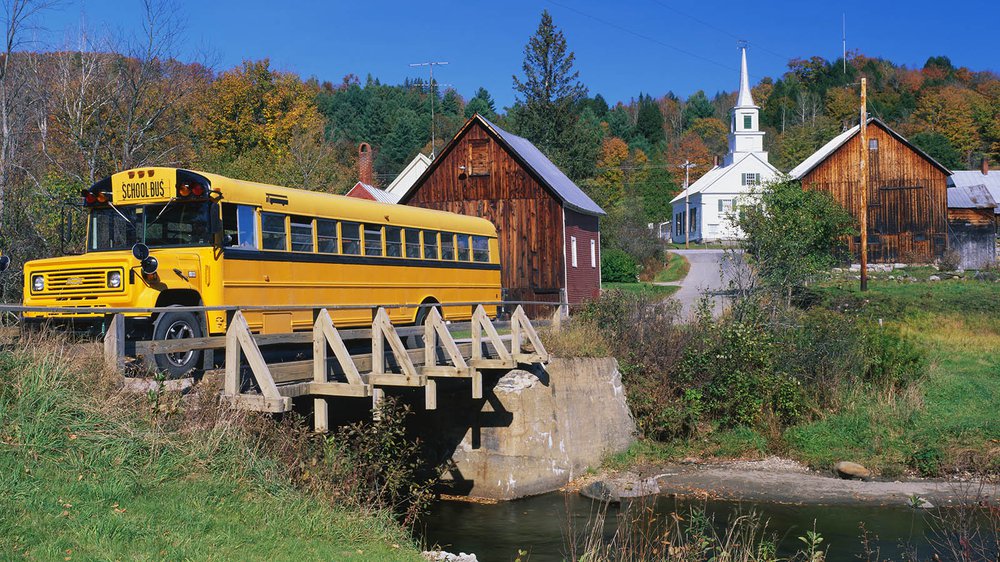Rural schools seek creative solutions for declining enrollment, staff shortages – By Emilia Harper, Education Dive
Rural school districts face unique challenges — including declining enrollments, reduced funding, teacher shortages and higher-than-average administrator turnover — that require creative solutions, District Administration reports.
Officials in Colorado, where 148 of the 178 school districts are classified as rural, are creating 40 dual-role administrative positions where superintendents often serve as principal simultaneously. The state also established the Colorado Center for Rural Education at the University of Northern Colorado in 2016 to develop new opportunities encouraging students to enter the teaching field.
Allen Pratt, executive director of the National Rural Education Association, also says nonurban districts should use technology to expand course access; work with local industries to create certifications and internships, fill current needs and attract more businesses to the area; and lure teachers with incentives such as housing subsidies, smaller class sizes and the possibility of expanded leadership roles.
According to the National Center for Education Statistics, about half of all public school districts — about one-third of all public schools and about a quarter of the nation's public school students — were enrolled in rural schools during the 2010-11 school year. Collectively, the issues rural schools face affect roughly 12 million students in the U.S.
These issues are spurring the populations of many rural districts to decline. For one, the agriculture industry, which takes a prominent role in many of these areas due to their landscapes, is now less dependent on large families and a large workforce. Some industries that once thrived in these regions have now been lost overseas or closed because of declining resources, transportation costs or a less educated workforce. And, as the overall population of the nation declines due to lower birth rates, more families are fleeing to cities and urban areas for more and better opportunities.

How to get teachers to believe in a new school program? Ask them to help design it. – By Matt Barnum, Chalkbeat
A veteran teacher in any school district will likely be able to tell the same story: A faddish new initiative comes sweeping in, perhaps promoted by the just-hired superintendent. Grand promises are made, and teachers get a few days of training (if they’re lucky).
Then, it slowly fades away, as teachers ignore mandates they see as unhelpful or impractical.
A new study looks closely at that phenomenon and its flip side — when teachers are bought in to programs designed to help their schools. The results, based on interviews with dozens of teachers at three high schools, aren’t so surprising: teachers are more enthusiastic if their school gets control over how a new program is designed and introduced.
Teachers leaders “were able to build buy-in from teachers in their school by customizing the design to fit the needs of their students and teachers,” write researchers Christopher Redding and Samantha Viano in the peer-reviewed study.
That involvement brings trade-offs, though. Teachers shaping the adoption of a new program often adjust a novel idea to fit into how they’ve already been working, Redding and Viano found. That could mean that promising ideas were watered down when they reached schools — or that teachers wisely avoid dramatic overhauls that would have done more harm than good.

Noem Offers Civics Test Requirement For High School Students – By The Associated Press on Keloland.com
Gov. Kristi Noem has proposed a measure that would require students to pass a civics test to graduate from high school.
The bill introduced Wednesday at the request of the governor's office calls for high school students to score at least 70 percent on the test to get a diploma.
Noem said this month in her State of the State address that it's only fair that young people demonstrate a basic knowledge of the nation's institutions and history before graduating from high school and taking on their responsibilities as citizens.
The civics exam would include at least 50 questions from the U.S. citizenship test. The requirement would take effect starting next school year.
South Dakota lawmakers also are considering other civics education bills this session.

Buoyed by Solid Economies, Most States Spend More on Higher Education – By Eric Kelderman, The Chronicle for Higher Education
State spending on higher education this fiscal year grew almost 4 percent over 2018, according to the results of an annual survey released on Monday.
The “Grapevine” survey, compiled by the Center for the Study of Education Policy at Illinois State University and the State Higher Education Executive Officers, found wide variations in states’ support for their colleges during the current fiscal year.
But over all, the increase in money for higher education follows a strong year for many state economies, which are projected to grow more than 4 percent in the 2019 fiscal year. Half of the states reported increasing higher-education spending by more than 3 percent for the current fiscal year, with Colorado showing the largest gain, at 12 percent, according to the survey.
Eighteen other states had increases in spending of less than 3 percent, according to a report on the survey.
Just five states reported decreases in higher-education appropriations, led by South Carolina, with a drop of 3.7 percent. That compares favorably to the previous fiscal year,when 18 states cut higher-education spending by as much as 21 percent.












